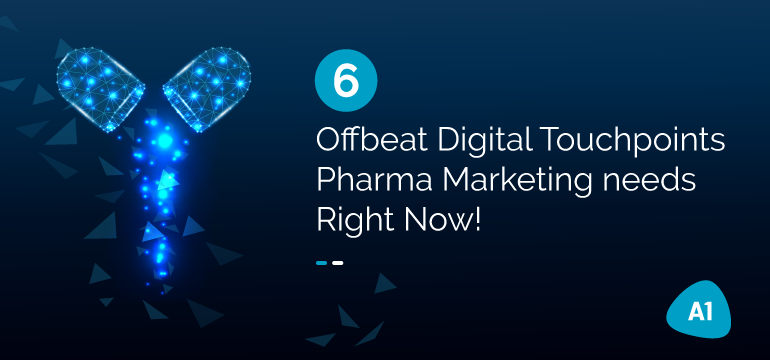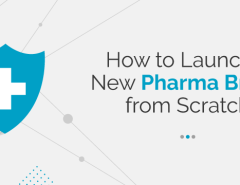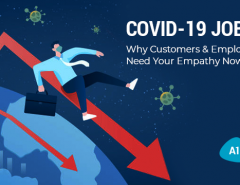As healthcare marketing continues to evolve into a complex landscape, digital touches continue to matter and pharmaceutical companies need to develop new ways to market their products.Digital touchpoints are those points of contact between a brand and its consumers. These touchpoints can be online, in print, on social media and beyond.
Significance of Digital Touch
As consumers become more digital, the lines between online and offline marketing begin to blur. As brands look to create an experience that connects with their customers in meaningful ways, the power of digital touchpoints is undeniable.
It is becoming more important than ever for pharmaceutical companies to leverage digital channels to connect with their audiences, while leveraging real-world experiences to foster brand loyalty.
Does Engagement Matter in the Pharma & Biotech Sector?
To do pharma marketing right, one must be able to build digital touchpoints that engage the target audience that matter most. Also,one of the first things you need to figure out is how to make digital touchpoints matter for your brand.
But, how do you do that? You can’t just use every channel and hope that it works out. There’s a science behind making digital touchpoints that matter for pharma marketing.This post will talk about such touch pointsand the way it should be done.
1. Messaging Strategy
The message should convey two things: that there is a solution and that it is effective. The pharma industry is often seen as too complex and confusing, but it is possible to make it simple. A good marketing strategy includes choosing the right media and reaching the right audience. The pharma industry is also a very dynamic one. The message must keep up with the changes.
First the core values of the brand have to be identified to evaluate the brand or product messaging. Here, the company’s culture also needs to be reflected.
2. PR & Media Relationships
When it comes to branding, we can’t ignore the fact that PR and media relations play a major role in brand visibility, whether it be through traditional media coverage or social media. When it comes to pharmaceutical brands, one of the best ways to create relationships with the media and journalists is to host events, offer interviews, and invite bloggers to attend your presentations.
Pharma brands are used to working with a lot of different people: regulators, wholesalers, retail chains, doctors, hospitals, etc. However, when they’re looking for media and PR relationships, they don’t always understand how to get started or what kind of relationship they need to establish.
With the help of a professional media relations team, a pharmaceutical brand can grow awareness around their latest R&D developments and their products.
3. Cross Promotions
The pharma industry needs to realize that they are in the service business and use these techniques to market their products just like any other large media company. Some of the main components include cross-promotion between pharmaceutical brands and their respective consumer products, and a strong digital marketing campaign.
Cross promotions for pharma brands have been around since forever. But they were done more traditionally back then. The pharmaceutical sector is a unique environment in which the demand side is relatively predictable while the supply side is relatively unstable. These two factors can make traditional direct response advertising a risky and ineffective strategy.
There is also one thing that separates modern pharma cross promotion marketing strategy from the traditional pharmaceutical cross promotions – and that is digital advertising. Today, with the help of tools such as Google, Twitter, Facebook, Pinterest, and LinkedIn, pharma marketers can make sure that every one of their promotions drives sales leads, whether it is inbound, outbound, paid, or organic search.
4. Interactive Content
Content is increasingly interactive, and this is changing the way that marketers are able to reach consumers. The reason is that the way we think about content now has changed. We no longer just receive content, but we also interact with it. Users expect a more immersive experience, and they want to be able to participate and engage with brands through the content that they consume.
Pharma brands are well suited to this because the industry itself is interactive. It’s one that requires patients and consumers to actively contribute to treatment and recovery of health issues. This is why interactive content makes sense for pharma brands. It builds community around a brand, and encourages patients to continue engaging with the brand after they’ve stopped interacting with it.
But in order to succeed with your interactive content marketing strategy, you need to know what it takes to execute effectively. And for that, a professional team dealing with pharma branding and marketing is always the right choice.
5. Enhance Mobile Marketing
It turns out that in an era when people are increasingly on mobile devices, pharma brands need to make sure they can compete and engage effectively across different channels, including mobile. This requires a holistic approach to marketing. Pharma brands must recognize that the success of their mobile strategy is tied to their overall digital marketing efforts.
Pharma companies can tap into the vast audience of existing mobile app users for a targeted mobile ad campaign to their patients. In October 2015, for example, Pfizer ran an experimental program, called AdCast for Pfizer, where its clients could pay $5 for 30 seconds of a live banner ad that would appear on users’ homescreen when they opened an app on their smartphone.
And while many pharmaceutical brands have been successfully using mobile marketing strategies to capture patients’ attention, some are struggling to reach their desired audiences on a consistent basis. The key to successfully developing a digital marketing strategy for pharma brands is identifying the type of content that is most beneficial to them and then creating it.
6. Drive Signups With Social Media
As a pharmaceutical and healthcare company, your brand should have a Facebook account. You may not think so, but a large percentage of people who visit pharma and healthcare websites are there to find out more about a particular medication. That’s a huge opportunity for you to reach them in an authentic, honest way with posts and other marketing activities.
Don’t just hope that people sign up because you put the signup button on your homepage. Use social media ads to drive traffic to your signup form. Facebook ads offer the best results for driving traffic to your site since they can target people by location, interests, or age group.
Usually pharma and biotech firms already have a great platform with LinkedIn and other networks, but they need to think about other social channels as well. They also need to keep track of where the conversations are happening. And they need to be where the conversations are happening. Because this where the magic happens. Most successful marketing initiatives will happen on social media.
Final Words!
In conclusion, the Pharma world is very competitive, so the best marketing strategy for pharma companies is to make sure that every touchpoint they make with customers resonates with the brand.
A marketing team can easily fall into the trap of thinking that it is only through high volume, high impact channels that they will succeed in their marketing efforts. While this is true for some brands, it is not true for all. One of the most important factors in digital marketing success is relevance, not reach.
So, for a successful digital touchpoint creation strategy, a professional team with bona fide experience in the industry is always the right choice. Because this is an experimental concept that needs




